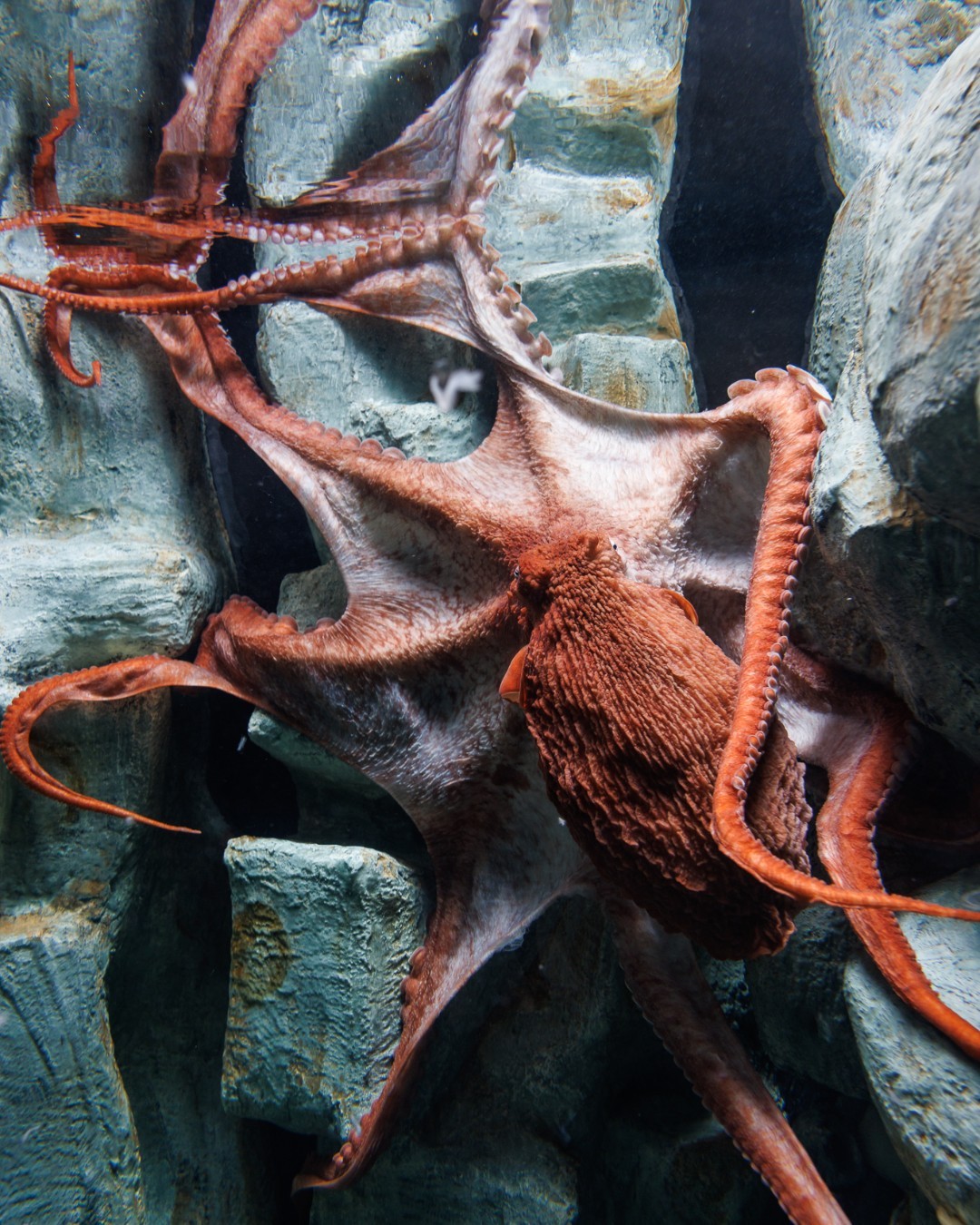- The adaptive coloration and camouflaging abilities of the Giant Pacific Octopus and their biological underpinnings.
- The role and function of chromatophores in cephalopod skin, particularly in octopuses.
- Conservation efforts and the importance of habitat preservation for the Giant Pacific Octopus.
- The significance of educational exhibits like “Boneless Beauties” in promoting wildlife conservation awareness.
Giant Pacific Octopuses are enthralling creatures that demonstrate remarkable abilities to adapt to their environments. As experts in the domain of zoology will attest, these adaptations are the result of a complex interplay of biological factors, with each aspect serving a critical function in the octopus’s survival. A major component of this survival strategy is the octopus’s ability to change its skin coloration and patterns, which is not only fascinating but also an evolutionary marvel.
At the heart of this ability are specialized cells called chromatophores. These cells reside within the skin of the octopus and are densely packed with pigments. When chromatophores expand, they expose more pigment, altering the color of the skin. This function is controlled by the octopus’s nervous system, which sends signals that result in the expansion or contraction of these chromatophores. Furthermore, the Giant Pacific Octopus can manipulate other skin structures such as iridophores and leucophores, which reflect and scatter light, adding to the complexity of their appearance. This multilayered system enables octopuses to execute rapid transformations, blending into various underwater landscapes seamlessly.
Understanding this mechanism is essential for comprehending how octopuses protect themselves from predators. The transformation is not solely about avoiding detection; it is also pivotal in hunting. By mimicking the colors and textures of their surroundings, octopuses can approach their prey stealthily. This ability to deceive both predator and prey underscores the importance of adaptive evolution in cephalopods, showcasing a level of prowess akin to some of the most advanced camouflage used in human technology.
In discussing the Giant Pacific Octopus, it is imperative to address conservation issues. These cephalopods thrive in the cold, nutrient-rich waters of the Pacific Ocean, a habitat increasingly threatened by human activities. Overfishing, pollution, and climate change pose substantial risks not just to the octopus but to the oceanic ecosystem as a whole. Conservationists focus on preserving these natural habitats to maintain the biodiversity crucial for species like the Giant Pacific Octopus. Protecting their environment ensures that these animals continue to reproduce and carry on their lineage, maintaining the ecological balance.
Public awareness and education play critical roles in the conservation of the Giant Pacific Octopus. This is where educational exhibits like “Boneless Beauties” become invaluable. Such displays not only highlight the stunning and otherworldly capabilities of these creatures but also engage the public in conservation narratives. By providing tangible, visual experiences, aquariums and zoos foster a connection between people and wildlife, inspiring interest and action in conservation efforts.
The Giant Pacific Octopus exemplifies the intricate and delicate balance of marine ecosystems. Understanding their biology and habitat requirements is not just a scientific pursuit but a key element in global conservation efforts. Every effort to study and conserve these remarkable creatures contributes to a larger objective: safeguarding biodiversity and ensuring the health of oceanic environments for future generations. It is crucial that we continue to support initiatives that protect these animals and their habitats, integrating science, education, and conservation in meaningful ways.
*****
Source Description
Now you see me ➡️ now you don’t!
You might have to pause to spot the Giant Pacific Octopus in our Boneless Beauties gallery. Octopuses have special cells called chromatophores in their skin, which expand and contract, allowing them to change their colors and patterns to blend in with their environment.


